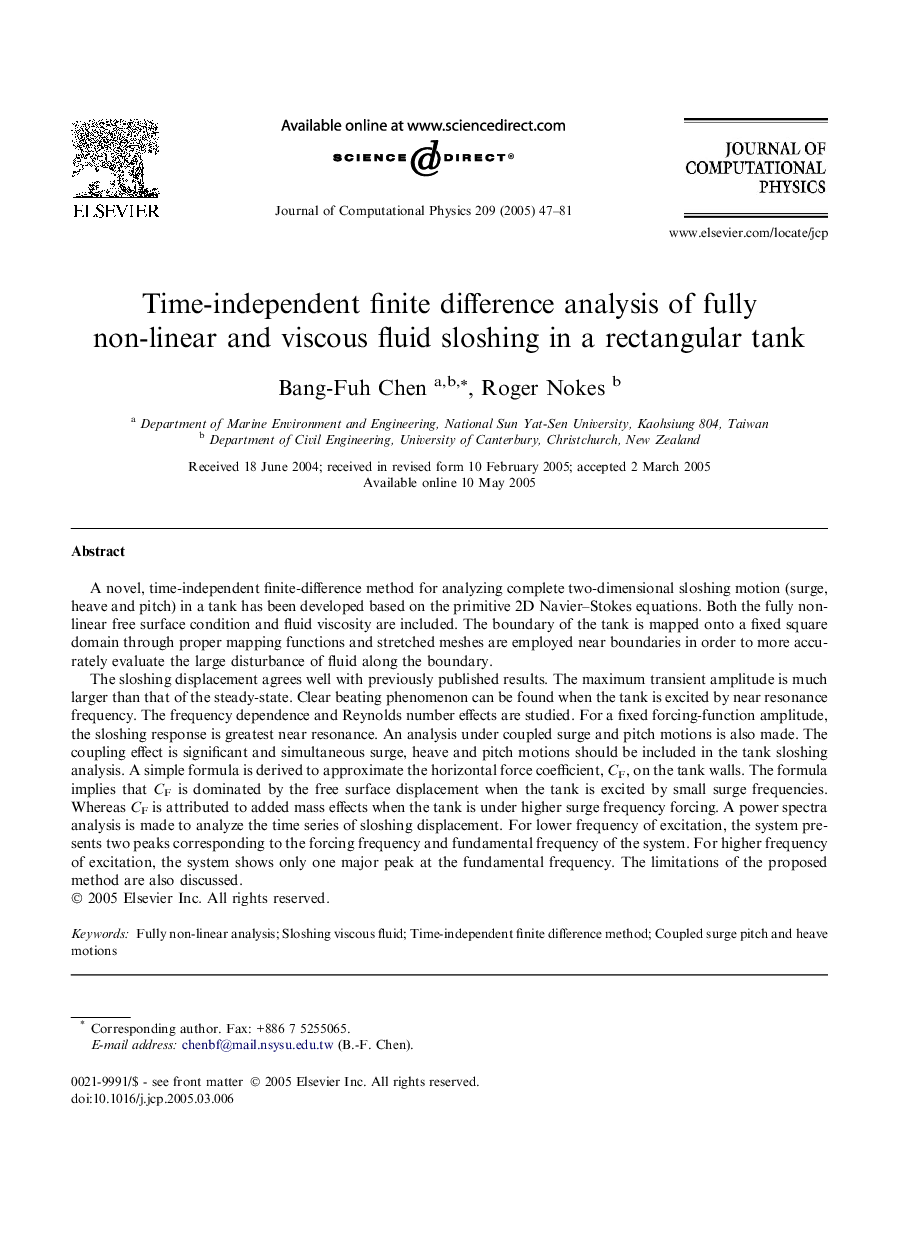| Article ID | Journal | Published Year | Pages | File Type |
|---|---|---|---|---|
| 10357257 | Journal of Computational Physics | 2005 | 35 Pages |
Abstract
The sloshing displacement agrees well with previously published results. The maximum transient amplitude is much larger than that of the steady-state. Clear beating phenomenon can be found when the tank is excited by near resonance frequency. The frequency dependence and Reynolds number effects are studied. For a fixed forcing-function amplitude, the sloshing response is greatest near resonance. An analysis under coupled surge and pitch motions is also made. The coupling effect is significant and simultaneous surge, heave and pitch motions should be included in the tank sloshing analysis. A simple formula is derived to approximate the horizontal force coefficient, CF, on the tank walls. The formula implies that CF is dominated by the free surface displacement when the tank is excited by small surge frequencies. Whereas CF is attributed to added mass effects when the tank is under higher surge frequency forcing. A power spectra analysis is made to analyze the time series of sloshing displacement. For lower frequency of excitation, the system presents two peaks corresponding to the forcing frequency and fundamental frequency of the system. For higher frequency of excitation, the system shows only one major peak at the fundamental frequency. The limitations of the proposed method are also discussed.
Related Topics
Physical Sciences and Engineering
Computer Science
Computer Science Applications
Authors
Bang-Fuh Chen, Roger Nokes,
